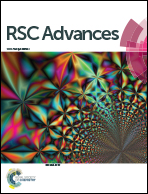Phase separation in a PSf/DMF/water system: a proposed mechanism for macrovoid formation
Abstract
The formation of polysulfone (PSf) membranes from the PSf/N,N-dimethylformamide (DMF)/water system was studied with optical microscopic observations. Visualization of the phase separation process was performed and immersion precipitated membranes were prepared with polymer solution containing different PSf concentrations and a coagulation bath having variable DMF content. The diffusion rate of water into the polymer solution was found to be reduced with increasing PSf concentration in the polymer solution or DMF content in the coagulation bath. Scanning electron microscope (SEM) images of hand casted membranes showed the unique occurrence of macrovoids and based on the optical microscopic findings, a mechanism for macrovoid formation was proposed. The contraction of a bi-continuous phase separated network of a polymer rich phase might cause the inflow of the polymer lean phase, leading to the formation of a polymer lean layer at the phase separating boundary, which should be responsible for macrovoid formation. The occurrence of the macrovoids was further related to the resistance to compaction of the immersion precipitated membranes. Results from compression tests indicated that the membrane is mechanically more sustainable with the damping of the macrovoids.


 Please wait while we load your content...
Please wait while we load your content...